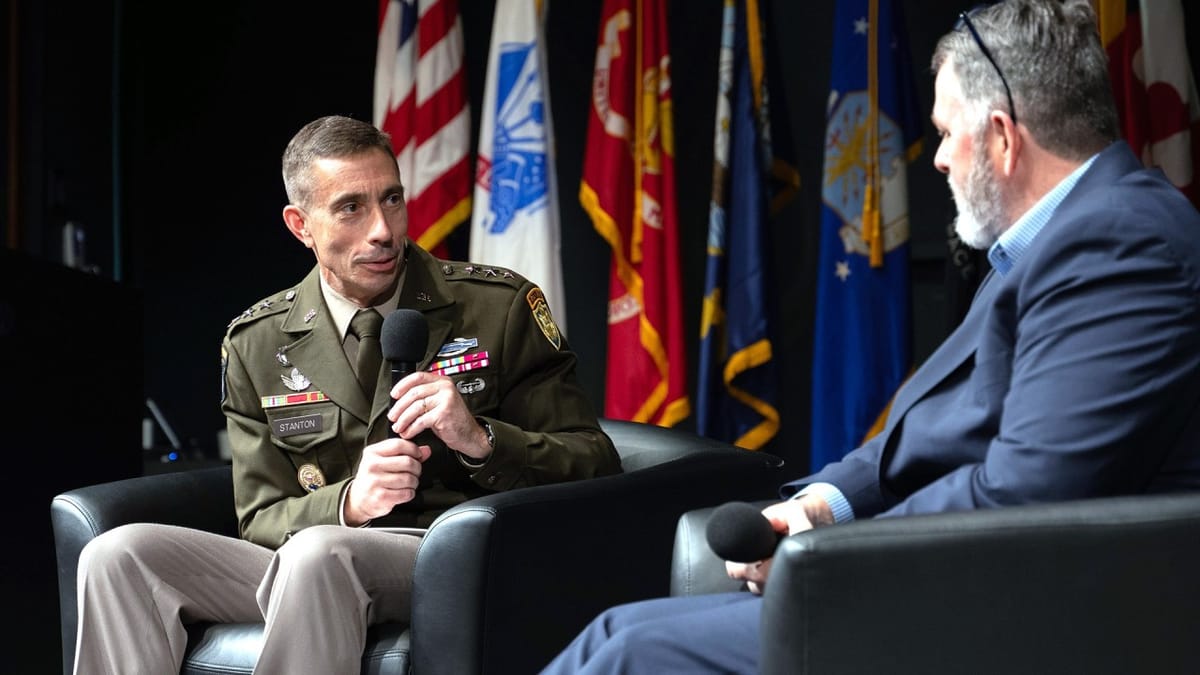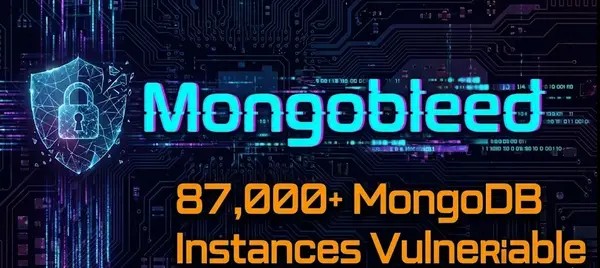The New Cybersecurity Governance Paradigm: UN Mechanisms, U.S. Force Generation, and Global Security Architecture

Executive Summary
The cybersecurity landscape underwent fundamental transformation in 2025 with two pivotal developments that will shape international digital security for decades to come. The United Nations concluded its five-year Open-Ended Working Group (OEWG) on cybersecurity in July 2025, establishing a permanent Global Mechanism for responsible state behavior in cyberspace, while simultaneously, the United States launched a comprehensive examination of creating an independent Cyber Force through a commission led by the Center for Strategic and International Studies (CSIS) and the Foundation for Defense of Democracies (FDD).
These parallel developments represent a critical inflection point: as the international community seeks to institutionalize cooperative cybersecurity governance through multilateral frameworks, individual nations are simultaneously recognizing the need for dedicated military cyber capabilities to address escalating threats in an increasingly contested digital domain.

I. The UN's Permanent Global Cybersecurity Mechanism: A New Era of Multilateral Cooperation
The Genesis and Evolution
The UN's Global Mechanism on developments in the field of ICTs in the context of international security and advancing responsible State behaviour in the use of ICTs emerged from the conclusion of the OEWG 2021-2025, established by UN General Assembly resolution 75/240. This achievement represents the culmination of over two decades of international dialogue on cybersecurity norms, beginning with early efforts in the 2000s and evolving through multiple iterations of both the Group of Governmental Experts (GGE) and OEWG processes.
The final session concluded in July 2025 with consensus on establishing this permanent mechanism, though the agreement came at a significant cost, with many observers noting that consensus was achieved by adopting "the lowest common denominator" approach. Despite these limitations, the establishment of a permanent UN body dedicated to cybersecurity represents a historic milestone in international cooperation.
Structure and Governance Framework
The Global Mechanism will operate under several key structural elements:
Five-Pillar Framework: Building on the OEWG's established approach, the mechanism will continue work across five core areas: existing and potential threats, rules and norms of responsible state behavior, international law application, confidence-building measures, and capacity building.
Dedicated Thematic Groups: The mechanism established two dedicated thematic groups: one integrated, policy-oriented group drawing on all five pillars to address specific cybersecurity challenges, and another focused on accelerating ICT security capacity-building. These groups will provide opportunities for more detailed, action-oriented discussions beyond the plenary sessions.
Stakeholder Participation: The mechanism includes provisions for engaging non-governmental stakeholders, though with limitations. Relevant non-governmental organizations with ECOSOC status can be accredited to participate, while other stakeholders must undergo accreditation on a non-objection basis, maintaining the problematic veto mechanism that hindered stakeholder participation during the OEWG process.
Operational Mechanisms and Tools
Several concrete operational tools emerged from the OEWG process that will transition to the Global Mechanism:
Global Points of Contact Directory: States expressed strong support for the Global POC Directory launched in May 2024, with regular "ping" tests conducted by the UN Secretariat to ensure operational readiness. This directory represents a practical confidence-building measure enabling direct communication between national cybersecurity authorities.
ICT Security Cooperation Portal: The mechanism will establish a dedicated Global ICT Security Cooperation and Capacity Building Portal to serve as the official website, provide practical information on cybersecurity events, and facilitate information sharing on best practices and capacity-building initiatives.
Simulation Exercises: The UN Office of Disarmament Affairs will convene regular simulation exercises in hybrid format to test response capabilities and enhance international coordination.

Challenges and Limitations
Despite representing a significant achievement, the Global Mechanism faces several structural challenges:
Consensus Decision-Making: The requirement for consensus may limit the mechanism's ability to respond rapidly to emerging threats or adopt decisive measures against malicious state behavior.
Resource Constraints: Some states have expressed concern about their ability to follow the many conversations on digital technologies happening within the UN, raising concerns about institutional sprawl and resource limitations.
Geopolitical Divisions: Fundamental disagreements between major powers, particularly the United States and Russia, over whether to emphasize cybersecurity (protecting systems) versus information security (controlling information flows) continue to complicate international cooperation.
II. U.S. Cyber Force Generation Initiative: Military Innovation in the Digital Domain
The Strategic Imperative
The Commission on Cyber Force Generation, launched by CSIS in partnership with the Cyber Solarium Commission 2.0 at FDD, addresses well-documented shortcomings in current force generation and readiness models to organize, train, and equip for military cyber operations. This initiative responds to a congressional mandate in the National Defense Authorization Act for Fiscal Year 2025 directing the National Academies of Sciences to assess whether cyberspace requires an independent military service.

The need for a dedicated Cyber Force has become increasingly urgent as the number of U.S. offensive and defensive cyber forces has remained effectively static over the past 15 years despite growing threats, while China has invested heavily in cyber warfare with cyber troop levels now estimated to be 10 times larger than those of the U.S. military.
Structural Challenges in Current Force Generation
The existing model faces several critical shortcomings:
Service-Specific Fragmentation: The U.S. Army, Navy, Air Force, and Marine Corps are each separately responsible for recruitment, initial training, promotion, and retention of their own cyber forces, with none optimized to perform this task effectively.
Misaligned Promotion Systems: Current promotion systems reward command experience in non-cyber fields over technical competence, resulting in services replete with officers who may be good leaders but lack cyber-specific skills necessary to excel.
Recruitment Challenges: Ideal recruits for cyber roles are more likely to come from high school computer science clubs than football teams, requiring different recruitment strategies than traditional military services.
Proposed Structure and Implementation
The FDD study proposed that a Cyber Force should be tethered to the Army and granted 10,000 personnel with a $16.5 billion budget, drawing lessons from the successful establishment of the Space Force in 2019.
Personnel Transfer Strategy: The Cyber Force could draw on lessons from the Space Force, which encountered few issues filling new roles despite requiring highly technical personnel, largely through lateral transfer of personnel from Air Force Space Command.
Specialized Career Paths: The new service would create career progression paths specifically designed for cyber professionals, moving away from traditional military advancement requirements that often don't align with cyber mission needs.
Direct Commissioning: Following the Space Force model, the Cyber Force could take advantage of direct commissioning opportunities for civilians with requisite cyber skills.

Commission Structure and Timeline
The Commission will formally launch on September 16, 2025, at CSIS, featuring discussions with policymakers and leading experts, and will prepare a report with policy recommendations for the administration. The Commission's unique focus is not on litigating whether to create a Cyber Force, but rather addressing the critical implementation questions.
Stakeholder Engagement: The Commission will convene current and former government officials, independent experts, industry representatives, and civil society to gather comprehensive input for its recommendations.
Public Engagement: The Commission will engage the broader policy community through regular updates and public discussions of its work.

III. Comparative Analysis of Global Cybersecurity Governance Approaches
Multilateral vs. National Frameworks
The simultaneous development of the UN Global Mechanism and U.S. Cyber Force represents two complementary but distinct approaches to cybersecurity governance:
Cooperative Governance Model: The UN approach emphasizes shared norms, confidence-building measures, and capacity building. This model focuses on establishing shared expectations and standards of behavior that guide state actions in cyberspace, helping prevent misunderstandings and reduce conflict risk.
Competitive Advantage Model: The U.S. Cyber Force initiative reflects recognition that despite cooperative frameworks, nations must maintain robust defensive and offensive capabilities to deter adversaries and protect national interests.
Regional and National Implementation Variations
Different regions have adopted varying approaches to cybersecurity governance:
European Union Approach: Emphasizes regulatory frameworks like NIS2 Directive and GDPR, combined with strong support for multilateral cooperation through the UN process.
China-Russia Bloc: Advocates for information security approaches that emphasize state sovereignty over internet governance, often conflicting with Western emphasis on open internet principles.
Developing Nations: Often focus on capacity-building and technical assistance, with many supporting the establishment of dedicated UN funding mechanisms for cybersecurity development.

Framework Effectiveness Comparison
Various cybersecurity frameworks offer different strengths:
NIST Cybersecurity Framework 2.0: Provides a flexible, comprehensive approach with six core functions including the new "Govern" function, designed to align with international standards and support global cybersecurity resilience.
ISO 27001/27002: Represents the international standard for information security management systems, widely adopted with over 70,000 certificates issued in 150 countries.
Regional Frameworks: Various national frameworks like the UK's NCSC Cyber Assessment Framework (CAF) and New Zealand's Protective Security Requirements (PSR) offer region-specific approaches.

IV. The Intersection of International Norms and National Cyber Capabilities
Normative Framework Evolution
The evolution of global cybersecurity norms has shown both breakthrough moments and periods of stagnation, with some norms like "states should participate and cooperate in multilateral forums" gaining lasting popularity while others have failed to gain traction.
Core Established Norms: The international community has achieved consensus on 11 voluntary, non-binding norms of responsible state behavior, including commitments that states should not knowingly allow their territory to be used for internationally wrongful acts using ICTs, and should not conduct or support ICT activity that intentionally damages critical infrastructure.

Implementation Challenges: Despite agreement on these norms, implementation remains uneven, with technical gaps between states, diverse national systems, and regional specificities creating barriers to uniform application.
Emerging Norm Areas: New discussions focus on emerging technologies like artificial intelligence and quantum computing, supply chain security, and the growing market for commercially-available ICT intrusion capabilities.
Tensions Between Cooperation and Competition
The parallel development of multilateral cooperation mechanisms and national military capabilities reflects a fundamental tension in contemporary cybersecurity governance:
Cooperation Imperatives: Cyber threats often transcend national boundaries, requiring international coordination for effective response. Critical infrastructure protection, information sharing, and capacity building benefit from multilateral approaches.
Security Dilemmas: Nations face a classic security dilemma where actions taken to enhance their own cyber security may appear threatening to others, potentially undermining cooperative efforts.
Dual-Use Technologies: Many cybersecurity tools and techniques have both defensive and offensive applications, complicating efforts to distinguish between legitimate security measures and aggressive capabilities.

Balancing Transparency and Operational Security
Both the UN mechanism and national cyber force development face challenges in balancing transparency with operational effectiveness:
UN Transparency Requirements: The Global Mechanism emphasizes sharing national views on international law application and voluntary sharing of implementation experiences, but states remain cautious about revealing sensitive capabilities or vulnerabilities.
Military Operational Security: Cyber force development requires protecting operational methods and capabilities while demonstrating defensive postures to avoid misinterpretation by adversaries.
V. Future Implications and Strategic Considerations
Short-Term Developments (2025-2027)
The immediate future will be shaped by several key developments:
UN Mechanism Launch: The Global Mechanism's organizational session, scheduled for no later than March 2026, will test whether the carefully negotiated compromises can translate into effective operational cooperation.
U.S. Commission Report: The CSIS Commission's forthcoming report will significantly influence congressional decisions about creating an independent Cyber Force, with implementation potentially beginning in the late 2020s.
Policy Alignment Challenges: Nations will need to balance participation in multilateral frameworks with development of national capabilities, potentially creating friction between cooperative and competitive approaches.
Medium-Term Evolution (2027-2030)
Norm Implementation: The true test of the UN framework will come as states attempt to implement agreed norms while facing real-world cyber incidents and conflicting national interests.
Force Generation Models: If the U.S. proceeds with an independent Cyber Force, other nations may follow similar models, potentially leading to a new era of military cyber capabilities competition.
Technology Integration: Artificial intelligence, quantum computing, and other emerging technologies will require both international cooperation frameworks and national capabilities to evolve rapidly.
Long-Term Strategic Implications (2030+)
Institutional Evolution: The UN Global Mechanism may require significant adaptation as cyber threats evolve and state practices change, with the first review conference providing an opportunity for major structural modifications.
Alliance Dynamics: NATO, bilateral security partnerships, and regional security arrangements will need to integrate both multilateral norm frameworks and national cyber capabilities into coherent strategies.
Global Governance Architecture: The relationship between UN-based multilateral frameworks, regional organizations, and private sector governance mechanisms will require ongoing coordination and potential integration.
VI. Policy Recommendations and Strategic Options
For Multilateral Institutions
Enhance Implementation Mechanisms: The UN Global Mechanism should develop concrete implementation tools beyond the current voluntary checklist, including peer review mechanisms and technical assistance programs.
Improve Stakeholder Integration: Address the limitations of the current non-objection mechanism for stakeholder participation by developing more transparent and inclusive processes that prevent arbitrary vetoes while maintaining state prerogatives.
Strengthen Capacity Building: Establish sustainable funding mechanisms for cybersecurity capacity building, potentially through the proposed UN voluntary fund, while ensuring programs address specific needs of developing countries.
Develop Crisis Response Protocols: Create rapid response mechanisms within the Global POC Directory system to enable coordinated international responses to major cyber incidents affecting multiple states.
For National Governments
Strategic Force Development: Nations considering dedicated cyber forces should conduct comprehensive assessments of their specific threat environments, existing capabilities, and resource constraints before committing to new organizational structures.
Norm Implementation Strategies: Develop national action plans for implementing agreed international norms, including domestic legislation, institutional frameworks, and coordination mechanisms across government agencies.
Alliance Coordination: Ensure that national cyber capability development aligns with alliance commitments and regional security arrangements to avoid undermining collective defense mechanisms.
Private Sector Engagement: Strengthen public-private partnerships for both defensive cybersecurity and norm implementation, recognizing that much critical infrastructure is privately owned and operated.
For Regional Organizations
Complementary Frameworks: Regional organizations should develop cybersecurity frameworks that complement rather than compete with global UN mechanisms, focusing on region-specific threats and cooperation opportunities.
Capacity Sharing: Establish regional cyber capacity-building programs that can serve as models for global initiatives while addressing local needs and building regional expertise.
Information Sharing Networks: Develop secure, trusted information sharing networks among regional partners that can feed into global mechanisms while protecting sensitive national information.
VII. Critical Assessment: Strengths, Weaknesses, and Unresolved Tensions
Strengths of Current Approaches
Institutional Permanence: The establishment of the UN Global Mechanism provides a permanent forum for international dialogue, ending the uncertainty of ad-hoc working groups and ensuring continuity in norm development.
Practical Tools: The Global POC Directory, simulation exercises, and capacity-building initiatives represent concrete, actionable elements that can produce immediate benefits for international cybersecurity cooperation.
Recognition of Military Realities: The U.S. Cyber Force initiative acknowledges that despite international cooperation, nations require robust military cyber capabilities to address threats and deter adversaries.
Comprehensive Scope: Both initiatives address the full spectrum of cybersecurity challenges, from technical capacity building to strategic deterrence, providing complementary approaches to different aspects of the problem.
Persistent Weaknesses
Enforcement Limitations: The UN mechanism lacks enforcement powers, relying entirely on voluntary compliance and peer pressure, which may prove insufficient against determined malicious actors.
Resource Constraints: Both international cooperation and national force development require significant financial and human resources that many states may struggle to provide consistently.
Definitional Ambiguities: Fundamental disagreements about key concepts like "information security" versus "cybersecurity" continue to complicate international cooperation and norm implementation.
Technology Pace: The rapid pace of technological change in cyber domains may outstrip the ability of both multilateral institutions and military organizations to adapt their frameworks and capabilities.
Unresolved Strategic Tensions
Sovereignty vs. Cooperation: The fundamental tension between state sovereignty and the need for international cooperation in addressing transnational cyber threats remains unresolved and may limit the effectiveness of both approaches.
Transparency vs. Security: Requirements for transparency in international cooperation conflict with operational security needs for national cyber capabilities, creating ongoing challenges for policy coordination.
Prevention vs. Response: Disagreements persist over whether to emphasize preventive measures through norms and cooperation or response capabilities through military cyber forces, with different states prioritizing different approaches.
Public vs. Private: The dominant role of private sector actors in cyberspace creates complications for both state-centric international frameworks and military-focused national capabilities.
VIII. Emerging Threats and Future Challenges
Technological Disruption
Artificial Intelligence Integration: Both AI-enabled cyber attacks and AI-powered defenses are rapidly evolving, requiring both international frameworks and national capabilities to adapt quickly to new threat vectors and defensive possibilities.
Quantum Computing Implications: The potential for quantum computing to break current encryption standards creates urgent needs for both international coordination on post-quantum cryptography and national capabilities to address quantum-enabled threats.
Supply Chain Complexity: Increasingly complex global supply chains for ICT products create vulnerabilities that require both international cooperation for standards and norms and national capabilities for supply chain security.
5G and Beyond: Next-generation communications networks create new attack surfaces and potential points of international friction, requiring coordination between technical standards, international norms, and national security policies.
Geopolitical Evolution
Great Power Competition: Intensifying strategic competition between the United States, China, and Russia complicates both multilateral cooperation and alliance-based approaches to cybersecurity.
Regional Fragmentation: Different regions may develop incompatible approaches to cybersecurity governance, potentially undermining global cooperation and creating cybersecurity "blocs" that mirror broader geopolitical divisions.
Non-State Actor Capabilities: The continued growth in capabilities of non-state actors, including criminal organizations and terrorist groups, challenges both state-centric international frameworks and traditional military responses.
Hybrid Threats: The blending of cyber operations with disinformation campaigns, economic coercion, and other tools of statecraft complicates both international law application and military response options.
Institutional Adaptation Requirements
Dynamic Norm Evolution: The static nature of many international agreements may prove inadequate for addressing rapidly evolving cyber threats, requiring more adaptive and responsive norm development processes.
Cross-Domain Integration: Cyber threats increasingly intersect with other domains including space, maritime, and electromagnetic spectrum, requiring integration across traditionally separate policy areas.
Multi-Stakeholder Governance: The need to integrate government, private sector, and civil society perspectives in cybersecurity governance creates ongoing challenges for both international institutions and national policy processes.
IX. Conclusion: Navigating the New Cybersecurity Paradigm
The parallel development of the UN Global Mechanism for cybersecurity cooperation and the U.S. initiative to establish an independent Cyber Force represents a defining moment in global cybersecurity governance. These initiatives embody the fundamental duality of contemporary cybersecurity: the imperative for international cooperation to address shared threats and the necessity for robust national capabilities to deter adversaries and protect vital interests.
The success of this new paradigm will depend on several critical factors:
Complementarity Over Competition: The effectiveness of both multilateral cooperation and national capabilities will be enhanced if they are viewed as complementary rather than competing approaches. International norms can provide the framework for responsible behavior while national capabilities provide the means to enforce those norms and respond to violations.
Adaptive Implementation: Both frameworks must demonstrate the ability to adapt rapidly to technological change and evolving threat landscapes. Static institutions and rigid organizational structures will quickly become obsolete in the dynamic cyber domain.
Sustained Political Commitment: The long-term success of these initiatives requires sustained political commitment from senior leaders who must balance competing priorities and resource constraints while maintaining focus on cybersecurity objectives.
Inclusive Participation: Effective cybersecurity governance requires the meaningful participation of all stakeholders, including states with limited capabilities, private sector actors, and civil society organizations, while respecting legitimate security concerns.
Realistic Expectations: Both initiatives must manage expectations realistically, recognizing that perfect security is unattainable and that progress will be incremental and sometimes contested.
The establishment of permanent institutional frameworks for both international cooperation and national capability development marks a maturation of cybersecurity governance from ad-hoc responses to systematic, long-term approaches. However, the ultimate test of these frameworks will come not in their design but in their implementation, as they confront real-world cyber incidents, evolving threats, and persistent geopolitical tensions.
The next five years will be crucial in determining whether this new cybersecurity paradigm can effectively balance cooperation and competition, transparency and security, and innovation and stability. The stakes could not be higher: failure to develop effective cybersecurity governance could leave critical infrastructure vulnerable, undermine international stability, and limit the benefits of digital transformation for global prosperity and development.
Success, however, offers the prospect of a more secure, stable, and prosperous digital future where international cooperation and national capabilities work together to protect the cyberspace that has become essential to modern civilization. The frameworks established in 2025 provide the foundation for this success, but realizing this potential will require sustained effort, adaptation, and commitment from all stakeholders in the years ahead.
This analysis represents an assessment of cybersecurity governance developments as of August 2025. The rapidly evolving nature of both cyber threats and policy responses requires ongoing monitoring and periodic reassessment of these frameworks and their effectiveness.













